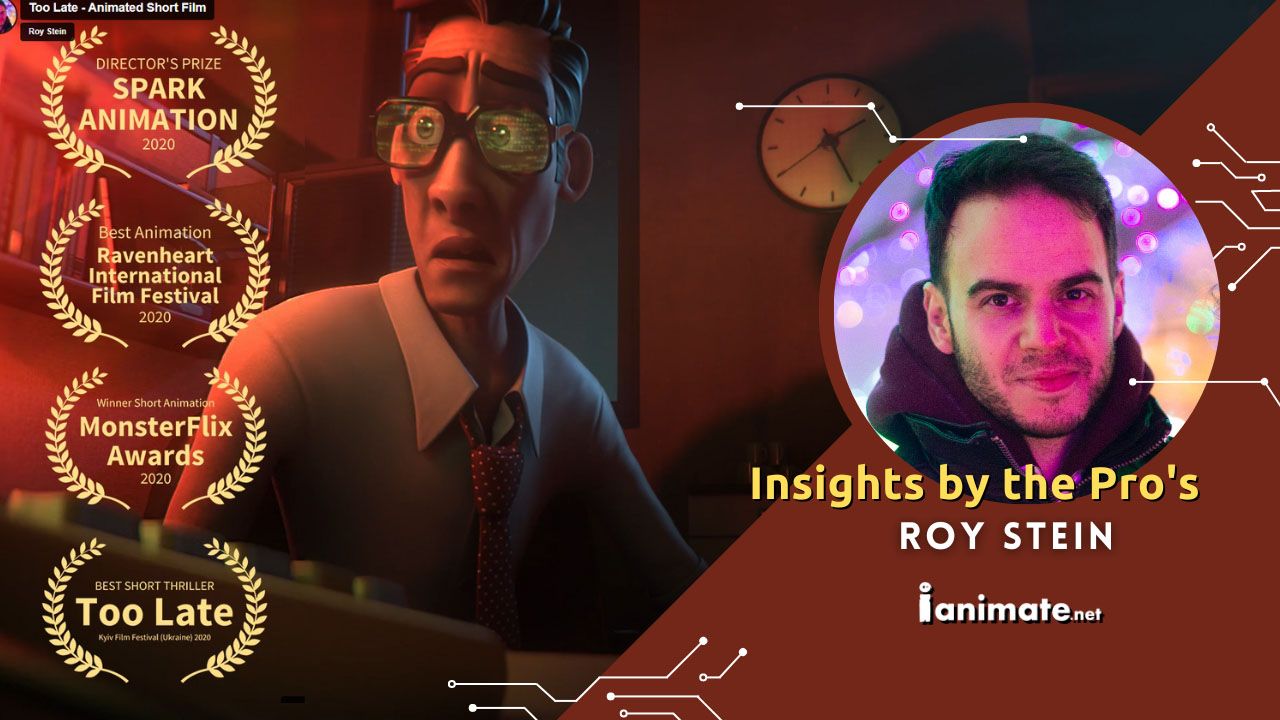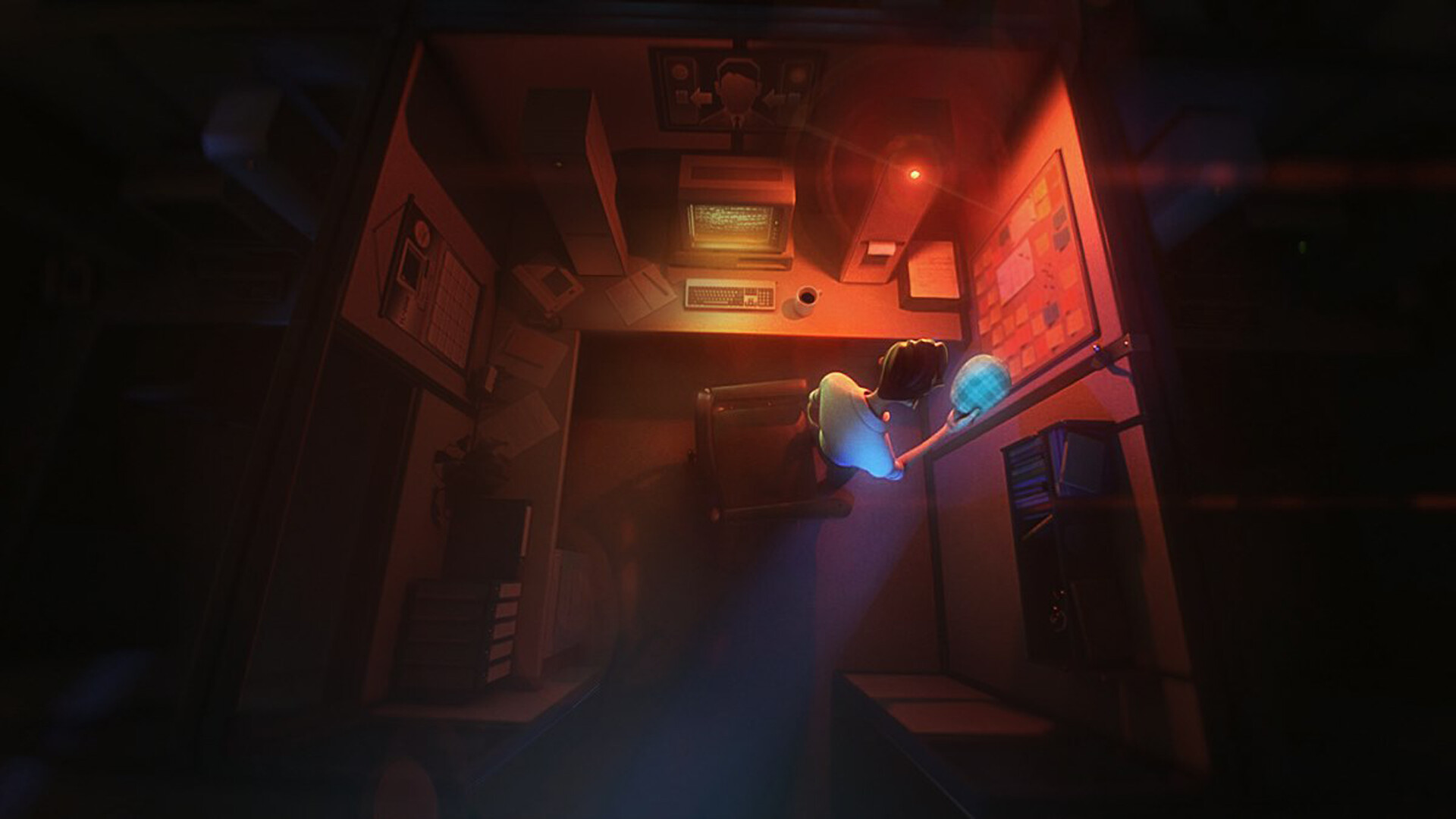Insights by the Pros with Lead Animator & Filmmaker Roy Stein
Lead Animator & Filmmaker and iAnimate Alumni Roy Stein share his stories and inspirations and how he succeeded in his animation journey.
“I was able to ask lots of questions and get an early idea of the expectations and level required from a feature animator.“

An award-winning Filmmaker, Animator, and Character Designer residing in Vancouver, BC. With over 10 years of experience in the feature animation industry, Roy has served as Lead Animator on films including “The Willoughbys” and “Addams Family 2”, and as a character animator on films such as “Ferdinand”, “Ice Age - Collision Course” and “The Little Prince” among others.
Roy’s character designs have been a part of several films, TV series, and in-development projects with clients such as Bron animation, Jam Filled, Spin Master, and Pepsico.
Roy currently serves as Lead Animator on an unannounced Netflix feature while also in production on his next directorial pursuit, “Concerto.” Roy has been a Lead Animator at Animal Logic for almost a year.
Alumni Interview
Animation Journey and Inspiration
iAnimate: Tell us a bit about your animation journey and throughout your time with us. Who or What inspired you to become an animator? How did you become an animator, and when did iAnimate become part of your journey?
Roy: I started thinking about taking character animation classes when I was still working in commercials in the UK. I wanted to focus on character animation, and iAnimate was just starting to accept people into their workshops - I had a friend tell me about the school, and I ended up taking a few classes as I was making my shift into Feature animation.
iAnimate: Can you tell us more about your role and responsibilities?
Roy: I am currently one of 5 Lead animators on an unannounced feature project, each shepherding a team of around 8-9 animators. Our job is to make sure our team members get creative support while helping them adhere to the director's and the supervisors' vision. This can be shot performance, "on model" draw overs to make sure we're staying true to characters, but also can be stuff like helping shooting ref, acting choices, or sometimes even work/life balance advice. A big component I'm trying to get better at is figuring out what each animator can push themselves on with the current show so that when we're juggling different production needs, we don't forget the growth of the individual artist.
iAnimate: What do you do to stay inspired and motivated animator?
Roy: Inspiration and motivation are slippery creatures! My way of chasing them down is twofold - I try to surround myself with animators and artists that are, by nature, passionate and driven. Being around those types of people helps me keep a live reminder of where I want to be as a creative person myself. The other thing I discovered over the years was that developing my own ideas and projects gives me a different type of creative outlet than I might get on a certain big production film.
[Still from Roy's short film Too Late]

Animation Lessons and Growth
iAnimate: How did iAnimate help prepare you for the industry? What were the most important things you learned at iAnimate?
Roy: All my instructors were at the time working animators in the feature field, which was great as I was able to ask lots of questions and get an early idea of the expectations and level required from a feature animator.
iAnimate: What is the most challenging shot you’ve ever animated, and why did you succeed at the shot?
Roy: Haha, I find every shot to be challenging one way or another! If I had to choose, I would say coming onto "Ferdinand" with no real quadruped experience was intense. I think I came out of it decently, but it was a long, steep learning curve.
[Roy's Current Reel]
iAnimate: Do you have any demo reel or interview advice you can share with animators on the job hunt?
Roy: For an interview - above all, be honest. Don't say things you think someone across the table wants to hear. They might believe you and give you work on a show you're not a natural fit for, making no one happy in the process. Be yourself, and if it is in the cards, it's gonna work out!
iAnimate: What other advice do you have for current or future iAnimate students?
Roy: Riffing on one of my own instructor's words to me over a decade ago- Choose the best-animated movie out there today(in your opinion). Is your personal work hitting the same level for acting, polish, and inventiveness? If it's not, keep making more and more test shots until it does. Figure out the weakest shot in your reel and replace it with a new test shot. keep doing it until you get your first gig (or even after, preferably) That is what was expected 10 years ago and even more so today.
Animation Career Advice & Tips
iAnimate: If there’s one animation tip or technique you’d share with someone wanting to animate in a feature film, what would it be?
Roy: Two things:
- It's ok to do certain things differently. Not everyone needs to use the same tools, scripts, etc. Some animators don't shoot ref, some animators don't draw, and some people don't even use a keyboard (!). Do your own thing (again, while not breaking the flow with your lead and sup) - at the end, what is on screen is the only thing that matters. No one cares if your graph editor looks this way or another if the shot is phenomenal.
- Take your time, especially at the beginning of a shot's life. Don't rush the discovery process. If you care about speed (I did the first few years of animating), the best version of speed will come over time with experience - by making better choices overall, not by rushing.
iAnimate: Given that there’s so much to learn, how would you recommend a brand new animator start their training?
Roy: Focus on one animation subject at a time and master it. Don't overwhelm yourself with too many problems at once. You probably know your weak points, so try to (gently) poke at them with a new test shot and get support from someone who has mastered (in your opinion) that particular problem in their animation career.
iAnimate: What makes a great animator or an animator a studio would hire?
Roy: Great animators, in my opinion, are curious, driven individuals who never stop finding new ways to fall in love with this field. If you have the tenacity to keep pushing your art and are constantly animating and getting constructive feedback (not compliments) and building on it, you will get there. Maybe not the specific studio position you want, maybe not your dream project - but if you love animation and never stop making animation, you're already there.
Want to learn what Disney, Pixar, and Blizzard do in their animations?

Be mentored by industry professionals from the leading studios in the industry. Start your animation career and get the dream animation job you want! Learn more about iAnimate and the Workshops that are made just for you.

